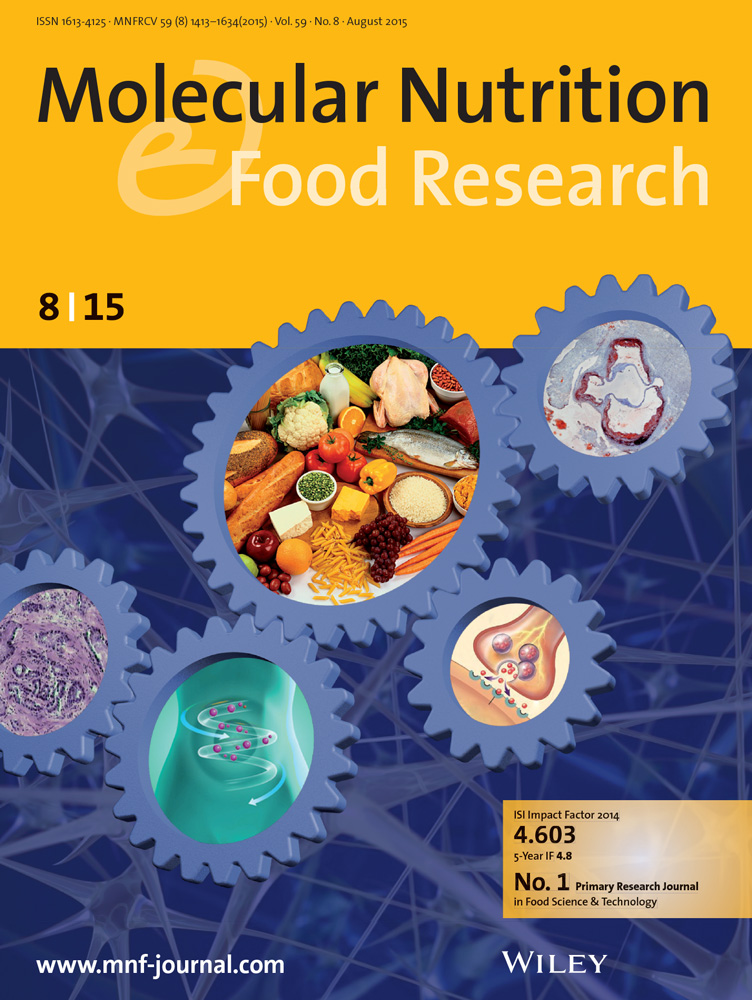Mango by‐Product‐Based High‐Fiber Confectionery Attenuates Liver Steatosis and Alters Gut Microbiota in High‐Fat Diet‐Fed Rats
IF 4.2
2区 农林科学
Q1 FOOD SCIENCE & TECHNOLOGY
引用次数: 0
Abstract
The incorporation of fruit by‐products into functional foods represents a promising strategy to address obesity. This study evaluated the nutritional potential of a novel extruded mango peel and bagasse‐based confectionery (MC) on obesity‐related parameters, gut microbiota composition, and liver/adipose tissue health. Twenty‐four male Wistar rats were assigned to four groups (基于芒果副产品的高纤维糖果在高脂肪饮食喂养的大鼠中减轻肝脏脂肪变性和改变肠道微生物群
将水果副产品纳入功能性食品是解决肥胖问题的一个有希望的策略。本研究评估了一种新型挤压芒果皮和甘蔗渣糖果(MC)对肥胖相关参数、肠道微生物群组成和肝脏/脂肪组织健康的营养潜力。24只雄性Wistar大鼠被分为四组(n = 6):标准饮食(STD)、STD + MC (MC‐STD)、高脂饮食(HFD)和HFD + MC (MC‐HFD),持续11周。MC的补充增加了纤维的摄入量。组织学上,与HFD对照组相比,MC‐HFD大鼠的肝脏脂肪堆积和脂肪细胞肥大明显减少。肠道菌群分析显示,添加MC可减少致肥菌,如gnavus Ruminococcus、Ruminococcus torques、Coprococcus catus、Coprococcus comes和Clostridium hylemonae,同时增加细菌多样性。SCFAs如异丁酸和乙酸与纤维摄入量呈正相关,与肝脏脂肪面积和低密度脂蛋白水平呈负相关。这些发现强调了在功能性糖果中使用水果加工副产品的营养相关性,旨在改善肝脏健康并减轻生命早期肥胖风险。
本文章由计算机程序翻译,如有差异,请以英文原文为准。
求助全文
约1分钟内获得全文
求助全文
来源期刊

Molecular Nutrition & Food Research
工程技术-食品科技
CiteScore
8.70
自引率
1.90%
发文量
250
审稿时长
1.7 months
期刊介绍:
Molecular Nutrition & Food Research is a primary research journal devoted to health, safety and all aspects of molecular nutrition such as nutritional biochemistry, nutrigenomics and metabolomics aiming to link the information arising from related disciplines:
Bioactivity: Nutritional and medical effects of food constituents including bioavailability and kinetics.
Immunology: Understanding the interactions of food and the immune system.
Microbiology: Food spoilage, food pathogens, chemical and physical approaches of fermented foods and novel microbial processes.
Chemistry: Isolation and analysis of bioactive food ingredients while considering environmental aspects.
 求助内容:
求助内容: 应助结果提醒方式:
应助结果提醒方式:


